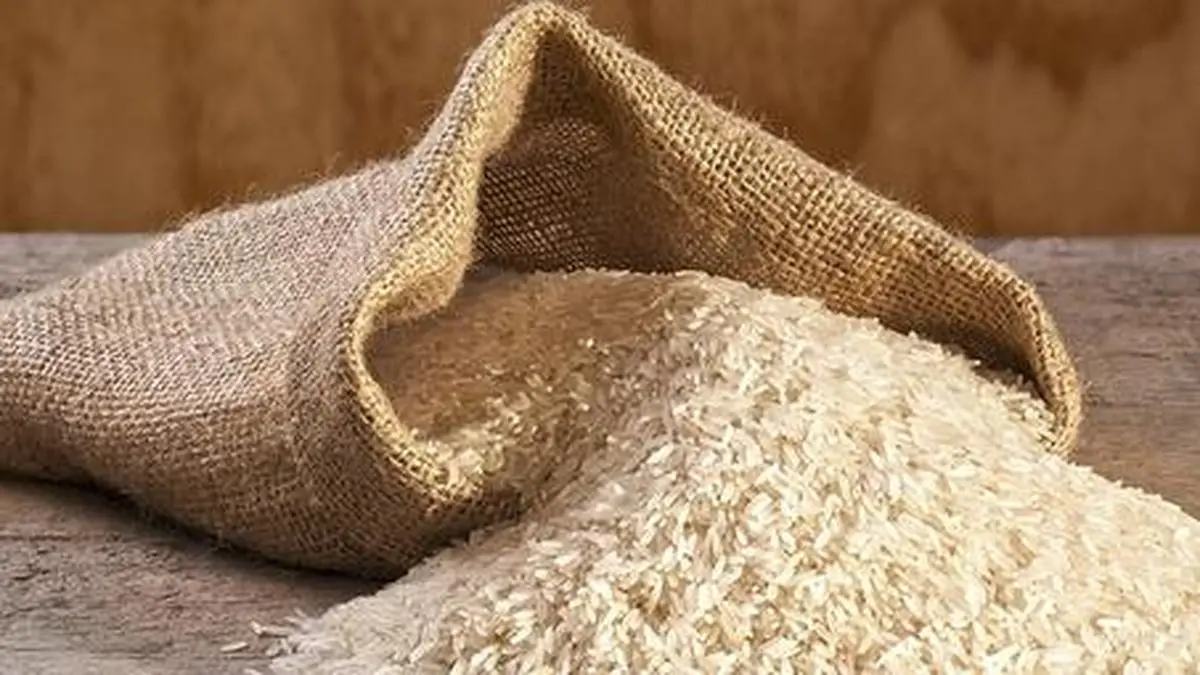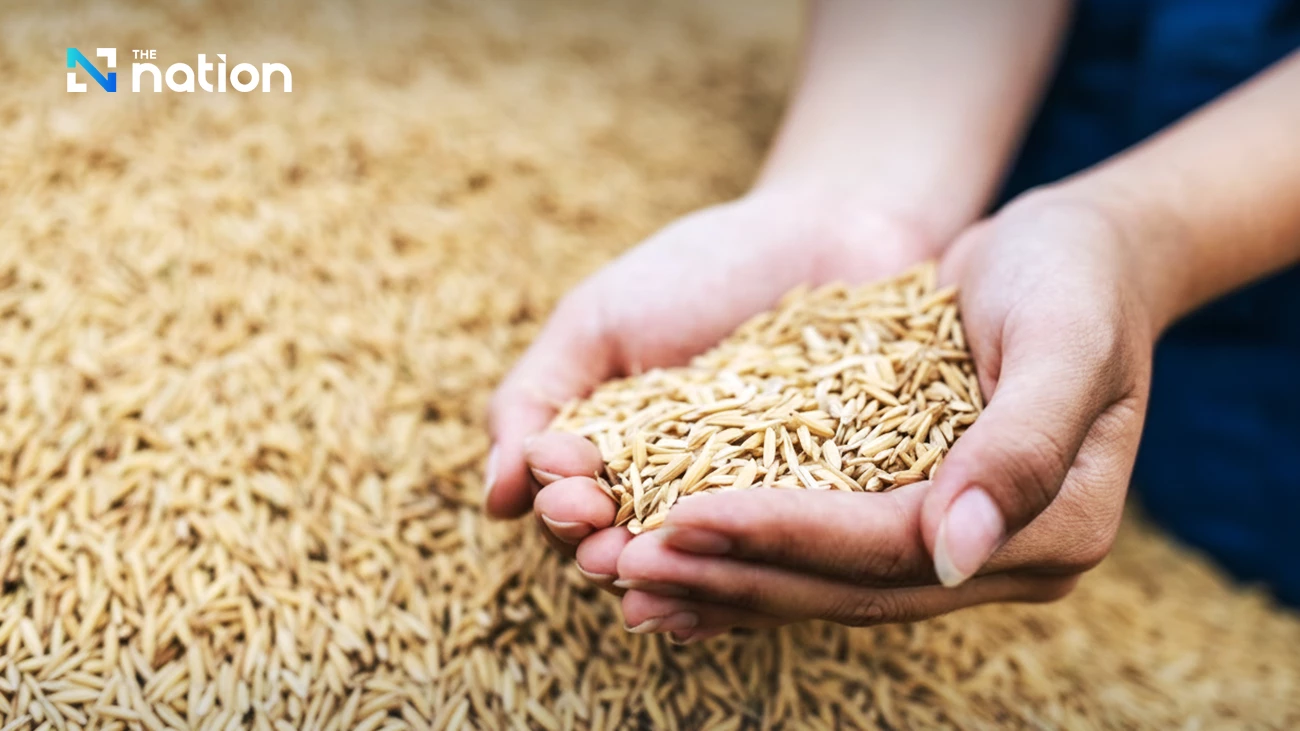Tags
A global rice crisis looms – can technology level the (paddy) field?
Drones, genetic engineering, and satellite technology are changing how we grow the staple on which 3.5 billion depend.
Emily Warner.

From paella and sushi to jollof and biryani, rice feeds over half the world’s population. Yet the staple grain is under threat.
More frequent droughts, extreme heat and erratic weather in Asia, where 90 per cent of the world’s rice is grown, have damaged crops and reduced yields, sending prices soaring and creating a global crisis.
In Japan, ubiquitous bowls of donburi are starting to look more precious. The government has had to dip into its emergency stockpile, auctioning off 165,000 tonnes of rice to bring down rising costs.
In the Philippines, a “food security emergency” has been declared, allowing the government to release buffer stocks to help check rising rice prices.
And in Indonesia, ministers are setting aside a further million hectares of land for rice production – an area six times the size of Greater London – to meet soaring global demand.


More than 3.5 billion people around the world depend on rice for essential calories and nutrition, among them people living in some of the poorest countries. It is these populations who will suffer if the rice shortage continues, experts say.
But there is hope yet for the world’s favourite grain. In recent years, a revolution has begun to bear fruit, with new technologies emerging to make rice production more resilient and more sustainable.
Genetic modification
In 2021, the Philippines became the first country to approve nutrient-enriched “golden rice” – a grain genetically modified to fight vitamin A deficiency – but crop modification has come a long way since then.
Prof Julie Gray, Professor of Plant Cell Signalling at the University of Sheffield, is developing drought- and heat-resistant rice crops for the UK Rice Research Consortium.
She and her colleagues are producing rice plants with fewer stomata – the tiny pores through which carbon dioxide enters, and water leaves, to make them more resilient in arid conditions.
Cereals like rice are slow to adapt to changes in their environment, but carbon dioxide levels in the atmosphere are significantly higher than they have been in the past and are expected to rise further.
“It’s quite probable that many of our crops have too many stomata. I figured they might be better off with fewer stomata, so we could optimise plants for future environments,” says Prof Gray.

At first she was doing this through genetic modification. This has become easier since the introduction of The Genetic Technology (Precision Breeding) Bill (2023), allowing the use and development of genetically modified plants across the UK.
Yet many people are still sceptical of genetically modified foods, so Prof Gray has been working with scientists in Thailand to create mutants through selective breeding, rather than genetic modification.
“Let me show you some of the rice,” she says, rummaging around in her bag for a moment before producing several plastic bags bulging with rice. The grains are a surprising array of colours, from off-white to deep red.
“I have actually eaten some of my low stomatal density rice,” she says. “As a genetic engineer we very rarely get to eat anything that we make, so doing it with plant breeders who are using non-GM techniques is really exciting.”
Did she enjoy it though? There’s a long pause and she wrinkles her face in distaste – it seems GM rice still has a way to go when it comes to flavour.
Drones and satellite technology
It’s not just the crops that are evolving, but the way they are planted.
Increasingly, drones are being used to plant rice, spread fertilisers, and map weeds and nutrient levels in rice fields, making the process more precise and efficient.
Drones are also helping farmers to offset labour shortages across Asia, as people migrate from rural locations to cities.
But the upfront cost of the drones can be prohibitive.
“Indian agriculture is dominated by small and marginal farmers who can’t afford the precision agriculture practices [like drones],” says Jayahari KM, India Country Coordinator for the World Resources Institute (WRI).
This is why, last year, the International Rice Research Institute (IRRI) launched the Drones4Rice Project in the Philippines, which aims to improve access for smallholder farmers.
So far, the project has been a success. Dr Alisher Mizabaev, who works for the IRRI, says: “I was surprised myself when I asked a farmer in Thailand, ‘How do you do this seeding?’ He said he used drones because everyone else has moved to Bangkok to work outside of agriculture. There is not enough labour anymore.”

Drones aren’t the only way rice farming has taken to the skies.
Satellites are also being used to map rice paddies, estimate methane emissions and even predict yield.
One scientist doing this is Dr Belen Marti-Cardona, an associate professor in earth observation and hydrology at the University of Surrey.
“We need a lot of parameters,” she says, “such as the type of soil, meteorological information, temperature and flooding status of the field”.
Key to her work is reducing methane emissions – something that needs to happen if we are to continue ramping up the production of rice around the world.
“Farmers can get paid for reducing their emissions, so what we’re doing with satellite data is verifying that this is happening,” she says.
Direct seeded rice
Ironically, while climate change is damaging the cultivation of rice, rice production itself is contributing to climate change and feeding the vicious cycle.
Rice cultivation alone accounts for 12 per cent of the methane created by people, a gas which warms the planet 25 times faster than carbon dioxide. It also uses a lot of water – around 2,500 litres per kilogram of rice, which is enough to fill about sixteen bathtubs.
Sustainable rice farming doesn’t necessarily require a high-tech solution; just changing the way it’s grown can have a significant impact.
A method called direct seeded rice (DSR) moves away from the traditional method of rice production – flooding fields and then transplanting seedlings into the water – and instead sews the seeds directly into the field. This reduces methane emissions, water usage, and damage to the soil.
Dr Smita Kurup, a plant developmental biologist at Rothamstead Research, is an expert in the technique.
“Rice is not a thirsty crop,” she tells The Telegraph. “Puddled fields is the traditional practice so we have consistently selected rice varieties that perform well in [this environment]. But rice absolutely does not need to be grown like that.”

She has screened hundreds of rice plants and selected the best varieties for DSR, so that farmers can transition to the new technique without compromising their yield.
But the sheer number of rice varieties presents its own challenge.
“Rice is funny,” she says. “In every country, the kind of rice you grow has different properties in terms of taste and how it feels in the mouth and the cuisine – compare jasmine rice and sticky rice to long grain rice for example.”
This means that different DSR-varieties need to be selected and introduced in every country – it’s not a fast process but it’s an effective one.
“I hope that all these initiatives will lead to collaboration, and making sure we are growing rice in a good way,” says Dr Mirzabaev. “I’m very optimistic.”
https://www.telegraph.co.uk/global-health/climate-and-people/a-global-rice-crisis-looms-can-technology-level-the-field/Published Date: April 28, 2025






